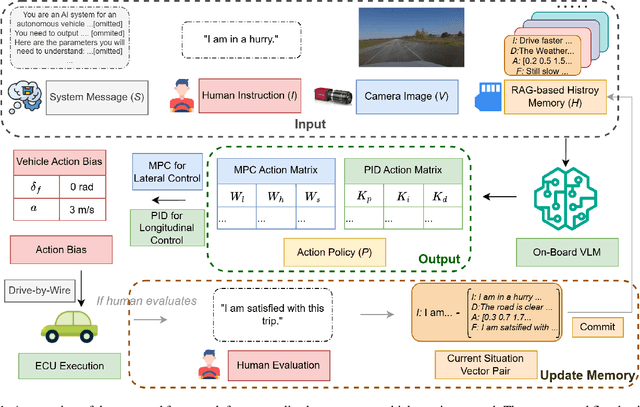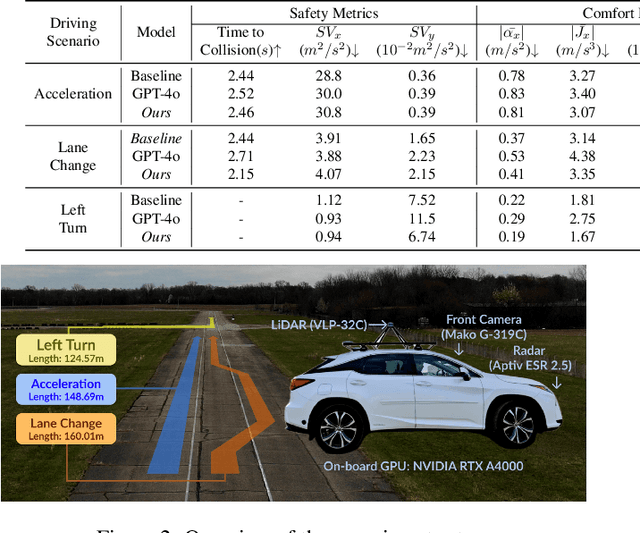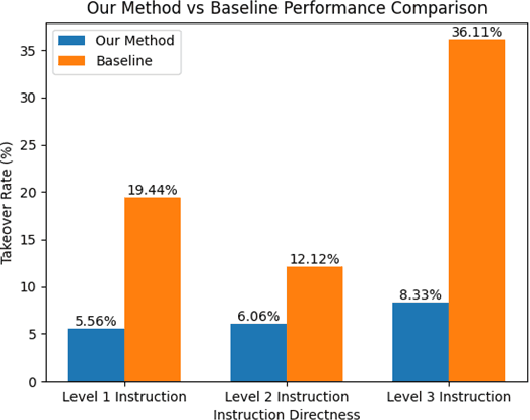Cong Zhang
VET: A Visual-Electronic Tactile System for Immersive Human-Machine Interaction
Apr 01, 2025Abstract:In the pursuit of deeper immersion in human-machine interaction, achieving higher-dimensional tactile input and output on a single interface has become a key research focus. This study introduces the Visual-Electronic Tactile (VET) System, which builds upon vision-based tactile sensors (VBTS) and integrates electrical stimulation feedback to enable bidirectional tactile communication. We propose and implement a system framework that seamlessly integrates an electrical stimulation film with VBTS using a screen-printing preparation process, eliminating interference from traditional methods. While VBTS captures multi-dimensional input through visuotactile signals, electrical stimulation feedback directly stimulates neural pathways, preventing interference with visuotactile information. The potential of the VET system is demonstrated through experiments on finger electrical stimulation sensitivity zones, as well as applications in interactive gaming and robotic arm teleoperation. This system paves the way for new advancements in bidirectional tactile interaction and its broader applications.
DiffAD: A Unified Diffusion Modeling Approach for Autonomous Driving
Mar 15, 2025Abstract:End-to-end autonomous driving (E2E-AD) has rapidly emerged as a promising approach toward achieving full autonomy. However, existing E2E-AD systems typically adopt a traditional multi-task framework, addressing perception, prediction, and planning tasks through separate task-specific heads. Despite being trained in a fully differentiable manner, they still encounter issues with task coordination, and the system complexity remains high. In this work, we introduce DiffAD, a novel diffusion probabilistic model that redefines autonomous driving as a conditional image generation task. By rasterizing heterogeneous targets onto a unified bird's-eye view (BEV) and modeling their latent distribution, DiffAD unifies various driving objectives and jointly optimizes all driving tasks in a single framework, significantly reducing system complexity and harmonizing task coordination. The reverse process iteratively refines the generated BEV image, resulting in more robust and realistic driving behaviors. Closed-loop evaluations in Carla demonstrate the superiority of the proposed method, achieving a new state-of-the-art Success Rate and Driving Score. The code will be made publicly available.
Adaptive Tool Use in Large Language Models with Meta-Cognition Trigger
Feb 18, 2025Abstract:Large language models (LLMs) have shown remarkable emergent capabilities, transforming the execution of functional tasks by leveraging external tools for complex problems that require specialized processing or real-time data. While existing research expands LLMs access to diverse tools (e.g., program interpreters, search engines, weather/map apps), the necessity of using these tools is often overlooked, leading to indiscriminate tool invocation. This naive approach raises two key issues:(1) increased delays due to unnecessary tool calls, and (2) potential errors resulting from faulty interactions with external tools. In this paper, we introduce meta-cognition as a proxy for LLMs self-assessment of their capabilities, representing the model's awareness of its own limitations. Based on this, we propose MeCo, an adaptive decision-making strategy for external tool use. MeCo quantifies metacognitive scores by capturing high-level cognitive signals in the representation space, guiding when to invoke tools. Notably, MeCo is fine-tuning-free and incurs minimal cost. Our experiments show that MeCo accurately detects LLMs' internal cognitive signals and significantly improves tool-use decision-making across multiple base models and benchmarks.
Frequency-Aware Guidance for Blind Image Restoration via Diffusion Models
Nov 19, 2024



Abstract:Blind image restoration remains a significant challenge in low-level vision tasks. Recently, denoising diffusion models have shown remarkable performance in image synthesis. Guided diffusion models, leveraging the potent generative priors of pre-trained models along with a differential guidance loss, have achieved promising results in blind image restoration. However, these models typically consider data consistency solely in the spatial domain, often resulting in distorted image content. In this paper, we propose a novel frequency-aware guidance loss that can be integrated into various diffusion models in a plug-and-play manner. Our proposed guidance loss, based on 2D discrete wavelet transform, simultaneously enforces content consistency in both the spatial and frequency domains. Experimental results demonstrate the effectiveness of our method in three blind restoration tasks: blind image deblurring, imaging through turbulence, and blind restoration for multiple degradations. Notably, our method achieves a significant improvement in PSNR score, with a remarkable enhancement of 3.72\,dB in image deblurring. Moreover, our method exhibits superior capability in generating images with rich details and reduced distortion, leading to the best visual quality.
On-Board Vision-Language Models for Personalized Autonomous Vehicle Motion Control: System Design and Real-World Validation
Nov 17, 2024



Abstract:Personalized driving refers to an autonomous vehicle's ability to adapt its driving behavior or control strategies to match individual users' preferences and driving styles while maintaining safety and comfort standards. However, existing works either fail to capture every individual preference precisely or become computationally inefficient as the user base expands. Vision-Language Models (VLMs) offer promising solutions to this front through their natural language understanding and scene reasoning capabilities. In this work, we propose a lightweight yet effective on-board VLM framework that provides low-latency personalized driving performance while maintaining strong reasoning capabilities. Our solution incorporates a Retrieval-Augmented Generation (RAG)-based memory module that enables continuous learning of individual driving preferences through human feedback. Through comprehensive real-world vehicle deployment and experiments, our system has demonstrated the ability to provide safe, comfortable, and personalized driving experiences across various scenarios and significantly reduce takeover rates by up to 76.9%. To the best of our knowledge, this work represents the first end-to-end VLM-based motion control system in real-world autonomous vehicles.
Rank Aggregation in Crowdsourcing for Listwise Annotations
Oct 10, 2024



Abstract:Rank aggregation through crowdsourcing has recently gained significant attention, particularly in the context of listwise ranking annotations. However, existing methods primarily focus on a single problem and partial ranks, while the aggregation of listwise full ranks across numerous problems remains largely unexplored. This scenario finds relevance in various applications, such as model quality assessment and reinforcement learning with human feedback. In light of practical needs, we propose LAC, a Listwise rank Aggregation method in Crowdsourcing, where the global position information is carefully measured and included. In our design, an especially proposed annotation quality indicator is employed to measure the discrepancy between the annotated rank and the true rank. We also take the difficulty of the ranking problem itself into consideration, as it directly impacts the performance of annotators and consequently influences the final results. To our knowledge, LAC is the first work to directly deal with the full rank aggregation problem in listwise crowdsourcing, and simultaneously infer the difficulty of problems, the ability of annotators, and the ground-truth ranks in an unsupervised way. To evaluate our method, we collect a real-world business-oriented dataset for paragraph ranking. Experimental results on both synthetic and real-world benchmark datasets demonstrate the effectiveness of our proposed LAC method.
A Hybrid Framework for Spatial Interpolation: Merging Data-driven with Domain Knowledge
Sep 04, 2024Abstract:Estimating spatially distributed information through the interpolation of scattered observation datasets often overlooks the critical role of domain knowledge in understanding spatial dependencies. Additionally, the features of these data sets are typically limited to the spatial coordinates of the scattered observation locations. In this paper, we propose a hybrid framework that integrates data-driven spatial dependency feature extraction with rule-assisted spatial dependency function mapping to augment domain knowledge. We demonstrate the superior performance of our framework in two comparative application scenarios, highlighting its ability to capture more localized spatial features in the reconstructed distribution fields. Furthermore, we underscore its potential to enhance nonlinear estimation capabilities through the application of transformed fuzzy rules and to quantify the inherent uncertainties associated with the observation data sets. Our framework introduces an innovative approach to spatial information estimation by synergistically combining observational data with rule-assisted domain knowledge.
Automatic detection of Mild Cognitive Impairment using high-dimensional acoustic features in spontaneous speech
Aug 29, 2024Abstract:This study addresses the TAUKADIAL challenge, focusing on the classification of speech from people with Mild Cognitive Impairment (MCI) and neurotypical controls. We conducted three experiments comparing five machine-learning methods: Random Forests, Sparse Logistic Regression, k-Nearest Neighbors, Sparse Support Vector Machine, and Decision Tree, utilizing 1076 acoustic features automatically extracted using openSMILE. In Experiment 1, the entire dataset was used to train a language-agnostic model. Experiment 2 introduced a language detection step, leading to separate model training for each language. Experiment 3 further enhanced the language-agnostic model from Experiment 1, with a specific focus on evaluating the robustness of the models using out-of-sample test data. Across all three experiments, results consistently favored models capable of handling high-dimensional data, such as Random Forest and Sparse Logistic Regression, in classifying speech from MCI and controls.
Prosody of speech production in latent post-stroke aphasia
Aug 21, 2024Abstract:This study explores prosodic production in latent aphasia, a mild form of aphasia associated with left-hemisphere brain damage (e.g. stroke). Unlike prior research on moderate to severe aphasia, we investigated latent aphasia, which can seem to have very similar speech production with neurotypical speech. We analysed the f0, intensity and duration of utterance-initial and utterance-final words of ten speakers with latent aphasia and ten matching controls. Regression models were fitted to improve our understanding of this understudied type of very mild aphasia. The results highlighted varying degrees of differences in all three prosodic measures between groups. We also investigated the diagnostic classification of latent aphasia versus neurotypical control using random forest, aiming to build a fast and reliable tool to assist with the identification of latent aphasia. The random forest analysis also reinforced the significance of prosodic features in distinguishing latent aphasia.
Graph Neural Networks for Job Shop Scheduling Problems: A Survey
Jun 20, 2024



Abstract:Job shop scheduling problems (JSSPs) represent a critical and challenging class of combinatorial optimization problems. Recent years have witnessed a rapid increase in the application of graph neural networks (GNNs) to solve JSSPs, albeit lacking a systematic survey of the relevant literature. This paper aims to thoroughly review prevailing GNN methods for different types of JSSPs and the closely related flow-shop scheduling problems (FSPs), especially those leveraging deep reinforcement learning (DRL). We begin by presenting the graph representations of various JSSPs, followed by an introduction to the most commonly used GNN architectures. We then review current GNN-based methods for each problem type, highlighting key technical elements such as graph representations, GNN architectures, GNN tasks, and training algorithms. Finally, we summarize and analyze the advantages and limitations of GNNs in solving JSSPs and provide potential future research opportunities. We hope this survey can motivate and inspire innovative approaches for more powerful GNN-based approaches in tackling JSSPs and other scheduling problems.
 Add to Chrome
Add to Chrome Add to Firefox
Add to Firefox Add to Edge
Add to Edge